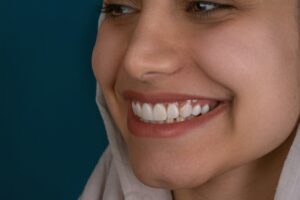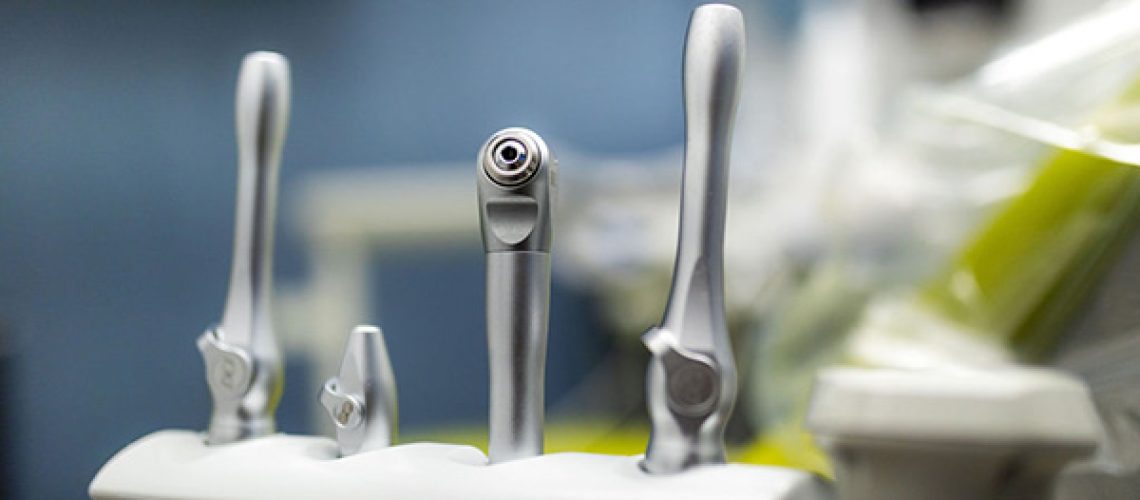Table of Contents

- Key Points
- Understanding Oral Cancer
- Why Early Detection Matters
- What Happens During an Oral Cancer Screening?
- Emerging Technologies in Oral Cancer Screening
- Who Should Get Screened?
- Reducing Your Risk
- Raising Awareness
- Take Action Today
- References
Key Points
- Oral cancer is a serious health condition that affects thousands of people annually.
- Despite its prevalence, awareness about the importance of screening for mouth cancer remains limited.
- Understanding risk factors and early detection are the best weapons for combating the impacts of oral cancer.
- April is Oral Cancer Awareness Month: a time to raise awareness about oral cancer threats and strategies patients can employ to combat them.
Oral cancer, which includes cancer of the lip, other parts of the mouth, and the oropharynx, is the 13th most common cancer on the planet, according to the World Health Organization. That amounts to approximately 390,000 new cases every year and more than 188,000 deaths.1
Fortunately, prevention and treatment can be extremely impactful. That begins with early detection. When this happens, survival rates are very high.
As a dental office committed to patient health, we aim to shed light on this critical topic, emphasizing the life-saving potential of early detection. This article covers the basics of oral cancer screenings, what the procedure entails, and why they are so important.
Understanding Where Oral Cancer Occurs
Oral cancer refers to malignancies that develop in various parts of the mouth and throat.2 This includes the:
- Lips
- Gums
- Tongue
- Cheeks
- Palate
- Pharynx
Like other forms of cancer, oral cancer occurs when cells mutate and grow uncontrollably, forming tumors or lesions. Common risk factors for contracting it include:
- Tobacco use: Smoking or chewing tobacco significantly increases the risk of oral cancer.
- Excessive alcohol consumption: Heavy drinking is another major factor that increases your risk of oral cancer.
- Human papillomavirus (HPV): Certain strains of HPV are linked to oral cancers.3
- Age: Oral cancer is more common in individuals over 40 years old.
- Family history: Like with other conditions, genetic predisposition plays a role in susceptibility to oral cancer.
Symptoms of oral cancer often include persistent sores, lumps, difficulty swallowing, or white/red patches in the mouth. Unfortunately, these signs can go unnoticed until the disease has advanced. This underscores the importance of regular screenings for early detection.
Why Early Detection Matters
Early detection of oral cancer is crucial for improving survival rates, reducing the required treatment intensity, and improving quality of life while combating the disease. Benefits of early detection include:

- Improved survival rates: According to the American Cancer Society, oral cancer detected at an early stage has a significantly higher five-year survival rate compared to late-stage diagnoses. For instance, early-stage oral cancers have survival rates as high as 91% for lip cancer and 69% for tongue cancer.4
- Less invasive treatments: Catching cancer early often allows for a broader range of therapies and treatment options. This can translate to more targeted results and fewer side effects.
- Better quality of life: Prompt treatment reduces complications and enhances recovery, which can translate to improved quality of life.
By identifying precancerous conditions or early-stage cancers during routine dental visits, patients can receive timely interventions that may save their lives.
What Happens During an Oral Cancer Screening?
Oral cancer screenings are quick and painless procedures typically conducted during routine dental check-ups. Here is what to expect:
- Visual Examination: An experienced dentist examines the lips, face, neck, and inside the mouth for abnormalities, such as lesions, discoloration, or swelling.
- Physical Examination: Palpation of the jawline, cheeks, and throat helps detect unusual lumps or firmness.
- Advanced Tools: Some practices use technologies like fluorescence lights (e.g., VELscope) or special dyes to highlight suspicious tissues. These are more common if patients suspect they are at high risk of oral cancer.
If abnormalities are found, further diagnostic tests—such as biopsies—may be recommended to confirm whether cancer is present.
Emerging Technologies in Oral Cancer Screening
While traditional clinical examinations remain effective, advancements in technology are revolutionizing oral cancer detection. Examples include:
- Saliva-Based Biomarkers: A screening test for oral cancer that is gaining traction as a non-invasive search for biomarkers in saliva. Biomarkers such as Interleukin-8 (IL-8) have demonstrated high sensitivity and specificity in diagnosing precancerous conditions.
- Telemedicine Platforms: Tele-cytology systems enable remote screening for oral cancer through risk categorization models, making screenings accessible even in underserved areas.
- Artificial Intelligence (AI): AI-based tools like deep convolutional neural networks are enhancing diagnostic accuracy by analyzing images and biopsy samples.5 Studies show AI systems can match or exceed the accuracy of specialists in identifying potentially cancerous lesions.
These innovations promise greater precision and accessibility while addressing healthcare inequities.
Who Should Get Screened?
Screening frequency for oral cancer depends on age and risk factors. A general rule of thumb is that:
- Adults over 20 should undergo screenings every three years.
- Adults over 40 should have annual screenings.
- High-risk individuals—such as smokers, heavy drinkers, or those with HPV—should opt for yearly screenings, regardless of their age.
Regular screenings are vital for everyone, but they are especially critical for those with elevated risk profiles.
How to Detect Oral Cancer at Home
While professional screenings are essential, self-awareness plays a significant role in early detection. Warning signs to watch for include:
- Persistent sores or ulcers lasting more than two weeks.
- Difficulty chewing, swallowing, or speaking.
- White or red patches inside the mouth.
- Lumps or thickening in the cheek.
- A persistent sore throat or sensation of something stuck in the throat.
If you notice any of these symptoms, schedule an appointment with your dentist immediately.
Reducing Your Risk
Preventative measures can significantly lower your chances of developing oral cancer. Consider the following:
- Avoid tobacco products entirely.
- Limit alcohol consumption to moderate levels.
- Use lip balm with SPF to protect against UV radiation, which is linked to increased risks of cancer.
- Maintain a diet rich in antioxidants from fruits and vegetables like berries and leafy greens.
- Practice safe sex to reduce risks related to contracting HPV.
By combining these habits with regular dental visits, you can safeguard your oral health effectively.
Raising Awareness
Oral Cancer Awareness Month is a time dedicated to educating communities about prevention and early detection.6 Dental offices can play a pivotal role by:
- Hosting free or low-cost screening events.
- Sharing educational materials about oral cancer risks and symptoms.
- Encouraging patients to make screenings part of their routine dental care.
Community outreach initiatives can help bridge gaps in awareness and ensure more people take proactive steps toward their oral and general health.
Take Action Today
Oral cancer screenings are more than just a routine procedure—they are a life-saving tool that empowers individuals to take control of their health. By prioritizing regular screenings and adopting preventative measures, patients can significantly reduce their risks while improving outcomes if diagnosed.
Wells Family Dental Group provides the highest quality dental services in Raleigh and the surrounding areas. In addition to oral cancer screenings, we offer a range of cosmetic and restorative procedures. Call today to schedule an appointment with the best dentist Raleigh NC has to offer.
References
- “Oral Health,” World Health Organization, March 2025, https://www.who.int/news-room/fact-sheets/detail/oral-health.
- “Oral Cancer,” Cleveland Clinic, retrieved on April 1, 2025, from: https://my.clevelandclinic.org/health/diseases/11184-oral-cancer.
- Zahra Pirmoradi, Kasra Nazari, Nadia Shafiee, et al., “Oral Cancer and HPV,” Asian Pacific Organization for Cancer Prevention, January 2024, https://www.waocp.com/journal/index.php/apjcb/article/view/1303/.
- “Survival Rates for Oral Cavity and Oropharyngeal Cancer,” American Cancer Society, retrieved on April 1, 2025, from: https://www.cancer.org/cancer/types/oral-cavity-and-oropharyngeal-cancer/detection-diagnosis-staging/survival-rates.html.
- Wei, X., Chanjuan, L., Ke, J. et al. “Convolutional Neural Network for Oral Cancer Detection Combined With Improved Tunicate Swarm Algorithm to Detect Oral Cancer,” Scientific Reports, November 2024, https://www.nature.com/articles/s41598-024-79250-0.
- “Oral Cancer Awareness Month,” American Association of Oral and Maxillofacial Surgeons, retrieved on April 1, 2025, from: https://aaoms.org/practice/promotional-materials/oral-cancer-awareness-month/.

Dr. Brett Wells is the founder of Loren Dental, DentalHQ.com, and Wells Family Dental Group, which was recently awarded the Triangle Business Journal’s “2024 Best Places to Work” recognition. Dr. Wells has more than 20 years of experience practicing general and family dentistry, and has published widely in major medical journals, like Dental Economics and Inside Dentistry, on topics ranging from navigating dental insurance to advice for other dental practices and the impact of PPOs on dentistry. He is a graduate of the University of North Carolina-Chapel Hill Adams School of Dentistry and maintains memberships in various professional associations, including the American Dental Association, the Academy of General Dentistry, and the Dentist Entrepreneur Organization.
